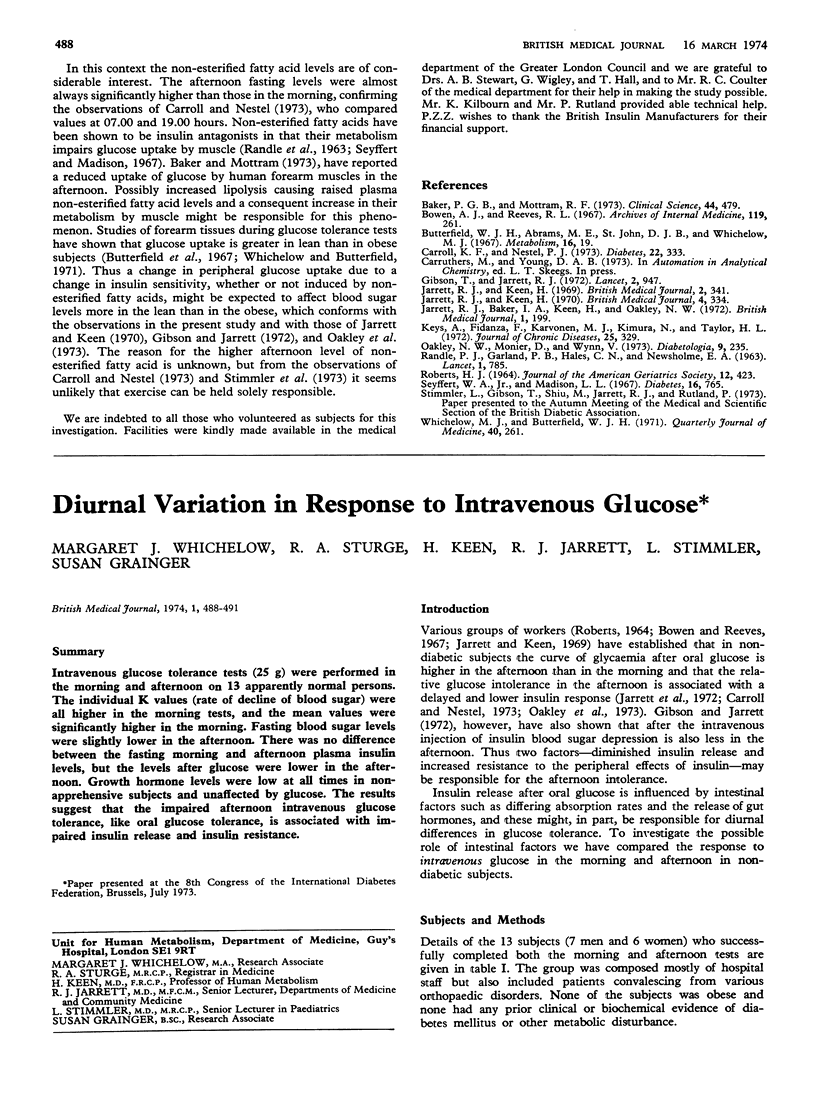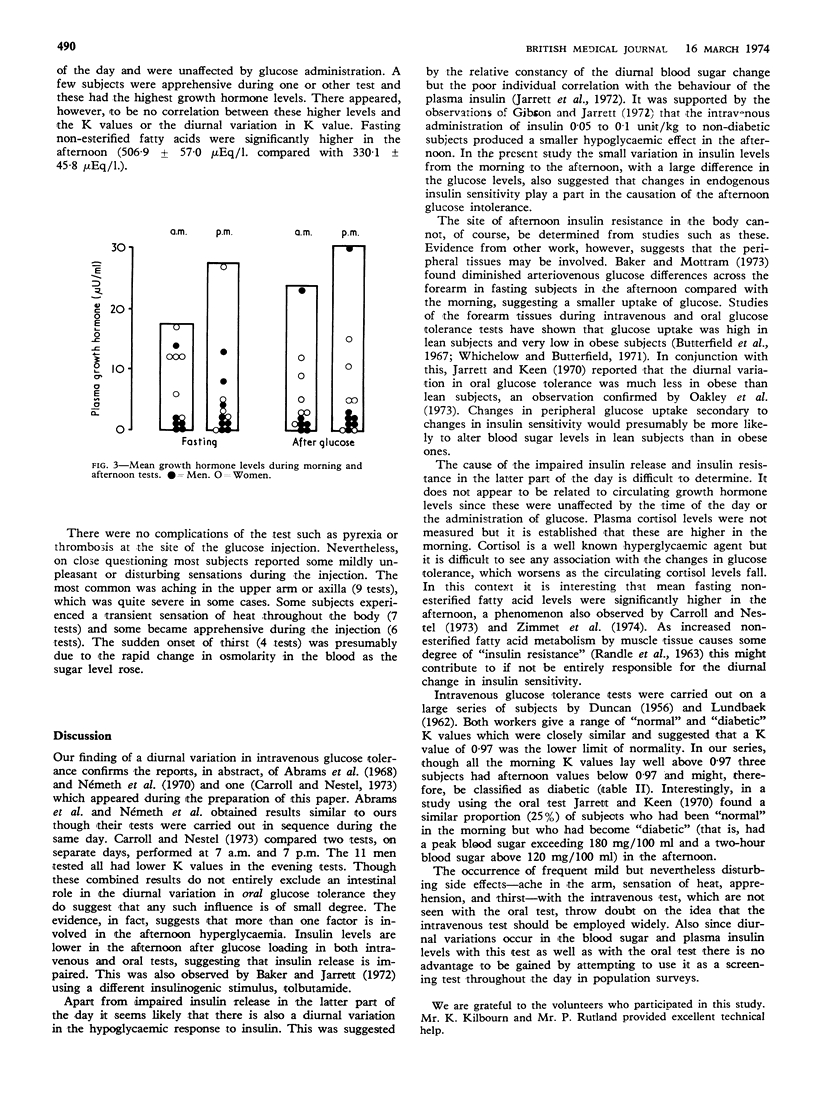Abstract
Intravenous glucose tolerance tests (25 g) were performed in the morning and afternoon on 13 apparently normal persons. The individual K values (rate of decline of blood sugar) were all higher in the morning tests, and the mean values were significantly higher in the morning. Fasting blood sugar levels were slightly lower in the afternoon. There was no difference between the fasting morning and afternoon plasma insulin levels, but the levels after glucose were lower in the afternoon. Growth hormone levels were low at all times in non-apprehensive subjects and unaffected by glucose. The results suggest that the impaired afternoon intravenous glucose tolerance, like oral glucose tolerance, is associated with impaired insulin release and insulin resistance.
Full text
PDF



Selected References
These references are in PubMed. This may not be the complete list of references from this article.
- Baker I. A., Jarrett R. J. Diurnal variation in the blood-sugar and plasma-insulin response to tolbutamide. Lancet. 1972 Nov 4;2(7784):945–947. doi: 10.1016/s0140-6736(72)92471-3. [DOI] [PubMed] [Google Scholar]
- Baker P. G., Mottram R. F. Metabolism of exercising and resting human skeletal muscle, in the post-prandial and fasting states. Clin Sci. 1973 May;44(5):479–491. doi: 10.1042/cs0440479. [DOI] [PubMed] [Google Scholar]
- Bowen A. J., Reeves R. L. Diurnal variation in glucose tolerance. Arch Intern Med. 1967 Mar;119(3):261–264. [PubMed] [Google Scholar]
- Carroll K. F., Nestel P. J. Diurnal variation in glucose tolerance and in insulin secretion in man. Diabetes. 1973 May;22(5):333–348. doi: 10.2337/diab.22.5.333. [DOI] [PubMed] [Google Scholar]
- Gibson T., Jarrett R. J. Diurnal variation in insulin sensitivity. Lancet. 1972 Nov 4;2(7784):947–948. doi: 10.1016/s0140-6736(72)92472-5. [DOI] [PubMed] [Google Scholar]
- Jarrett R. J., Baker I. A., Keen H., Oakley N. W. Diurnal variation in oral glucose tolerance: blood sugar and plasma insulin levels morning, afternoon, and evening. Br Med J. 1972 Jan 22;1(5794):199–201. doi: 10.1136/bmj.1.5794.199. [DOI] [PMC free article] [PubMed] [Google Scholar]
- Jarrett R. J., Keen H. Diurnal variation of oral glucose tolerance: a possible pointer to the evolution of diabetes mellitus. Br Med J. 1969 May 10;2(5653):341–344. doi: 10.1136/bmj.2.5653.341. [DOI] [PMC free article] [PubMed] [Google Scholar]
- LUNDBAEK K. Intravenous glucose tolerance as a tool in definition and diagnosis of diabetes mellitus. Br Med J. 1962 Jun 2;1(5291):1507–1513. doi: 10.1136/bmj.1.5291.1507. [DOI] [PMC free article] [PubMed] [Google Scholar]
- Oakley N. W., Monier D., Wynn V. Diurnal variation on oral glucose tolerance: insulin and growth hormone changes with special reference to women taking oral contraceptives. Diabetologia. 1973 Jun;9(3):235–238. doi: 10.1007/BF01219788. [DOI] [PubMed] [Google Scholar]
- RANDLE P. J., GARLAND P. B., HALES C. N., NEWSHOLME E. A. The glucose fatty-acid cycle. Its role in insulin sensitivity and the metabolic disturbances of diabetes mellitus. Lancet. 1963 Apr 13;1(7285):785–789. doi: 10.1016/s0140-6736(63)91500-9. [DOI] [PubMed] [Google Scholar]
- Whichelow M. J., Butterfield W. J. Peripheral glucose uptake during the oral glucose-tolerance test in normal and obese subjects and borderline and frank diabetics. Q J Med. 1971 Apr;40(158):261–273. doi: 10.1093/oxfordjournals.qjmed.a067269. [DOI] [PubMed] [Google Scholar]


